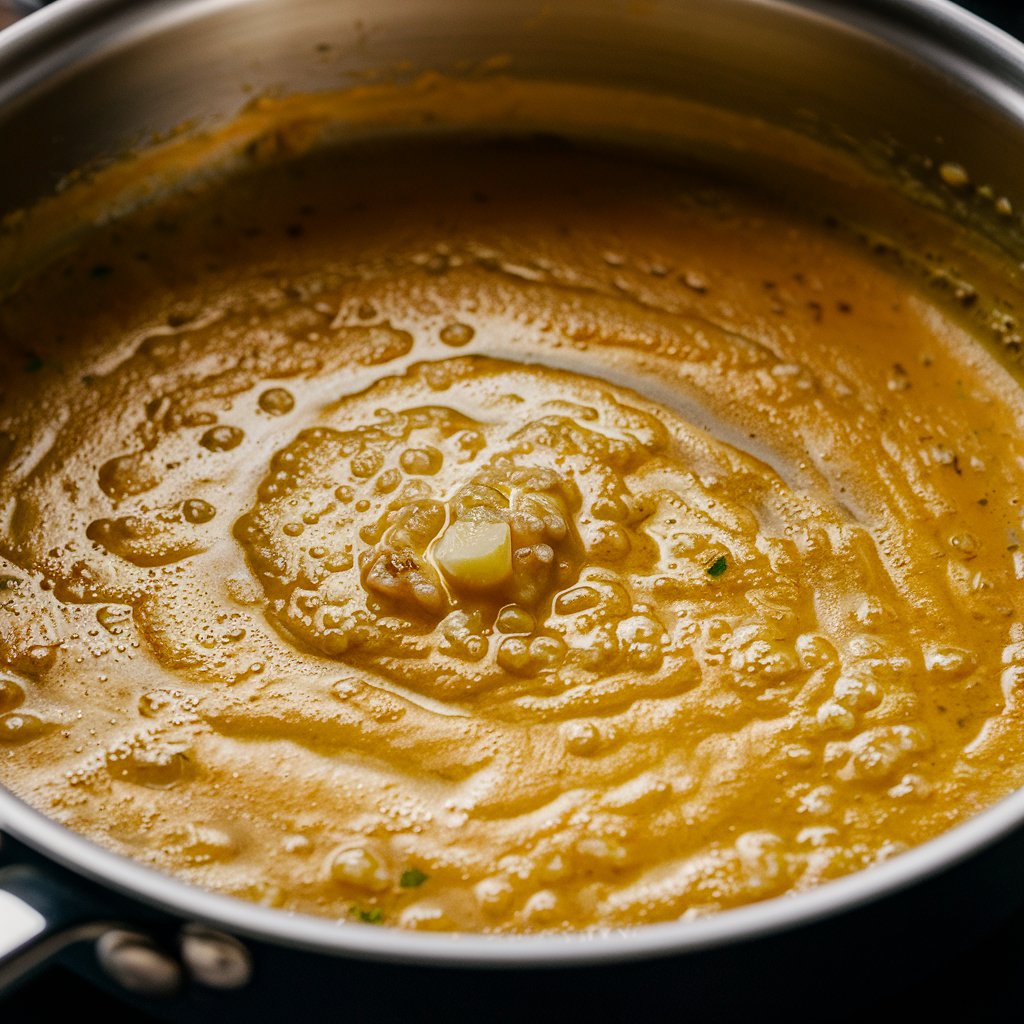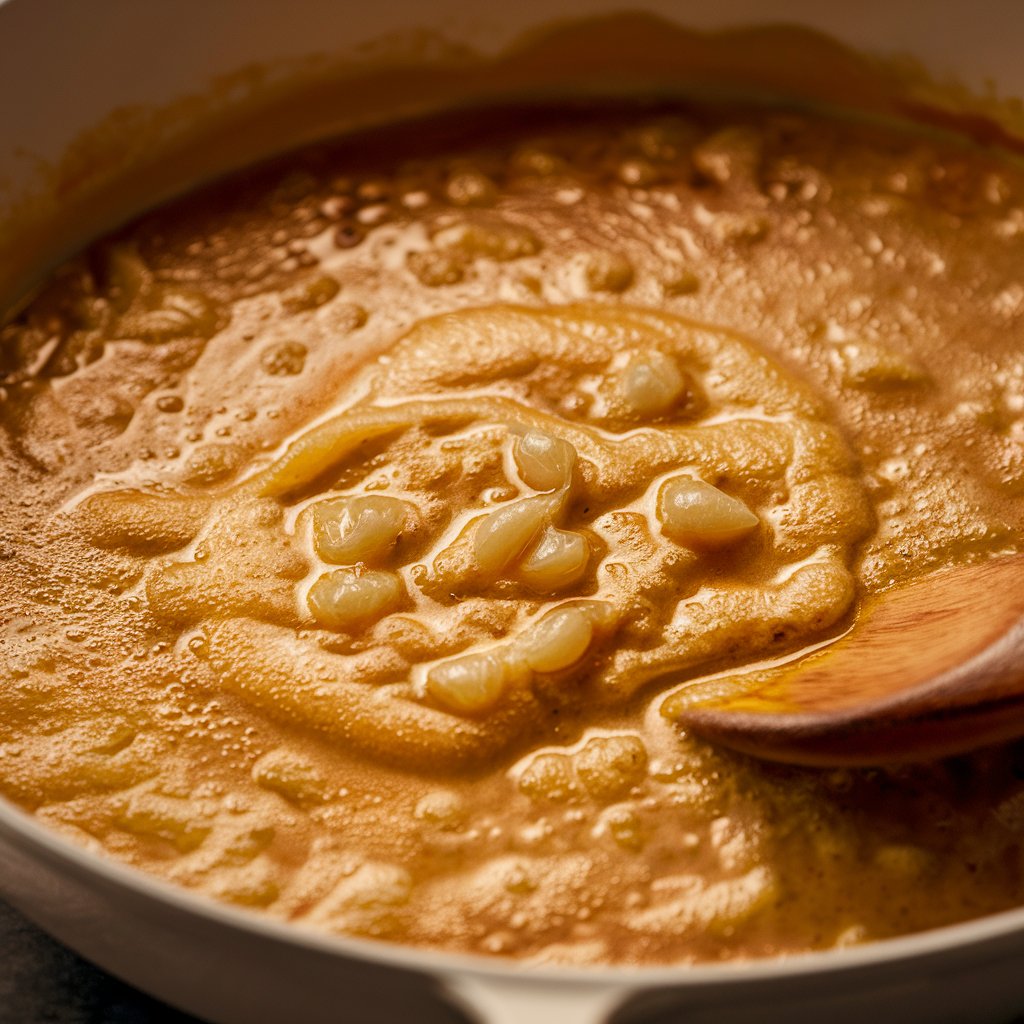Creamy garlic sauce is a beloved addition to many dishes. Its rich, velvety texture and robust flavor can elevate everything from pasta to vegetables. But what happens when you have leftover sauce? Reheating creamy garlic sauce can be tricky. If not done correctly, you might end up with a sauce that has separated, curdled, or lost its signature flavor. In this guide, we’ll explore the best methods to reheat creamy garlic sauce without compromising on its taste or texture.
For more delicious sauce recipes, check out our comprehensive guide to sauce making.
Why Reheating Creamy Garlic Sauce is Tricky
Creamy sauces, especially those made with dairy, can be delicate when it comes to reheating. The primary challenge is that the ingredients in the sauce, such as cream and butter, can separate when exposed to high heat. This separation can result in a sauce that is grainy or oily, rather than smooth and creamy.
Moreover, garlic is a key ingredient that can become bitter if overcooked. Reheating the sauce at too high a temperature can alter the flavor profile, making the garlic taste harsh instead of its intended mellow, savory flavor.
If you’re curious about other common cooking challenges, visit our cooking tips and tricks page.
The Science Behind Reheating Creamy Garlic Sauce
To understand how to properly reheat creamy garlic sauce, it helps to understand the science behind the ingredients. Creamy sauces typically consist of emulsified mixtures, where fat droplets are suspended in water or another liquid. This emulsification creates the creamy texture that we love.
When you reheat a creamy sauce too quickly or at too high a temperature, the emulsion can break. The fat separates from the liquid, leaving you with a sauce that is no longer smooth. This is why reheating slowly and at a low temperature is key.
For more insights into cooking science, check out our article on emulsification in cooking.
Best Methods to Reheat Creamy Garlic Sauce
1. Stovetop Method to Warm Creamy Garlic Sauce
The stovetop method is the most recommended for reheating creamy garlic sauce. It allows you to control the heat and ensures even warming.
Steps to Reheat Garlic Sauce on the Stovetop:
- Use a Non-Stick Pan: Start by selecting a non-stick pan to prevent the sauce from sticking and burning.
- Low Heat: Set the stove to low heat. Avoid medium or high heat as this can cause the sauce to break.
- Add a Liquid: To maintain the sauce’s consistency, add a small amount of milk, cream, or broth. This helps to re-emulsify the sauce and prevent it from becoming too thick.
- Stir Constantly: Stir the sauce continuously to keep it from sticking to the pan. Stirring also helps to evenly distribute the heat, preventing hot spots that can cause separation.
- Check Consistency: Once the sauce is warmed through, check the consistency. If it seems too thick, add a little more liquid. If it’s too thin, let it simmer for a few minutes to thicken up.
If you love stovetop cooking, you might find our stovetop cooking techniques article useful.
2. Double Boiler Method for Gently Reheating Creamy Garlic Sauce
The double boiler method is another excellent way to gently reheat creamy garlic sauce. This method uses steam to warm the sauce, reducing the risk of separation.
Steps for Using a Double Boiler to Reheat Creamy Garlic Sauce:
- Set Up the Double Boiler: Fill a large pot with a few inches of water and bring it to a simmer. Place a heatproof bowl on top, making sure it doesn’t touch the water.
- Add the Sauce: Pour the sauce into the bowl and let the steam gently warm it.
- Stir Occasionally: Stir the sauce occasionally to ensure it heats evenly.
- Monitor the Temperature: Keep the heat at a simmer. If the water starts to boil, reduce the heat to prevent overheating the sauce.
For those who enjoy using a double boiler, our guide to double boiler techniques is a great resource.
3. Microwave Method to Reheat Garlic Cream Sauce
While the microwave is not the ideal method for reheating creamy garlic sauce, it can be used if you’re in a pinch. The key is to reheat it slowly and in short bursts.
Steps to Reheat Creamy Sauce in the Microwave:
- Low Power Setting: Set the microwave to 50% power or use the “defrost” setting.
- Use a Microwave-Safe Container: Pour the sauce into a microwave-safe bowl.
- Reheat in Intervals: Reheat the sauce in 15-20 second intervals. Stir between each interval to distribute the heat evenly.
- Check Consistency: After each interval, check the sauce’s consistency. Add a splash of cream or milk if it starts to thicken too much.
Learn more about microwave cooking hacks for reheating food without losing flavor.
Tips for Reheating Creamy Garlic Sauce
1. Avoid High Heat to Preserve Creamy Sauce Texture
High heat is the enemy of creamy sauces. It can cause the emulsion to break, leading to a grainy or oily sauce. Always reheat slowly and at a low temperature.
2. Add Fresh Ingredients to Enhance Reheated Garlic Sauce
If the sauce has lost some of its flavor during storage, you can freshen it up by adding a small amount of minced garlic or a splash of cream before reheating. This can help to revive the sauce’s original taste.
3. Stir Constantly to Prevent Sauce Separation
Constant stirring is essential when reheating creamy sauces. It helps to prevent the sauce from sticking to the pan and ensures that it heats evenly.
4. Don’t Overcook Your Garlic Cream Sauce
Once the sauce is warm, remove it from the heat immediately. Overcooking can lead to separation and can cause the garlic to become bitter.
5. Store Sauce Properly to Maintain Quality
Proper storage is crucial to maintaining the quality of your creamy garlic sauce. Store it in an airtight container in the refrigerator and use it within 3-4 days for the best results.
For more tips on food storage, check out our comprehensive food storage guide.
Common Mistakes to Avoid When Reheating Creamy Garlic Sauce
1. Reheating at High Temperatures Can Ruin the Sauce
As mentioned earlier, high temperatures can cause the sauce to break. This is one of the most common mistakes people make when reheating creamy garlic sauce.
2. Using the Wrong Pan for Reheating Garlic Sauce
Using a non-stick pan or a heavy-bottomed pan is recommended. Thin pans can cause the sauce to heat unevenly, leading to separation.
3. Forgetting to Stir While Reheating Garlic Cream Sauce
Neglecting to stir the sauce can result in hot spots, which can cause the sauce to break. Make sure to stir the sauce continuously while reheating.
4. Not Adding Liquid to Maintain Sauce Consistency
If your sauce is too thick, it’s important to add a little liquid to restore its original consistency. Without this, the sauce may become overly thick and lose its creamy texture.
Reheating Different Types of Creamy Garlic Sauce
1. How to Reheat Alfredo Sauce Properly
Alfredo sauce, a type of creamy garlic sauce, is a popular choice for pasta dishes. When reheating Alfredo sauce, follow the same principles of low heat and constant stirring. If the sauce is too thick, add a splash of milk or cream to thin it out.
Learn more about reheating Alfredo sauce in our Alfredo sauce reheating guide.
2. Garlic Parmesan Sauce: Reheating Tips
Garlic Parmesan sauce is another variation that pairs well with many dishes. Reheat this sauce slowly, and consider adding a small amount of freshly grated Parmesan before serving to enhance the flavor.
We have a great article on pairing Garlic Parmesan sauce with different dishes.
3. How to Reheat White Wine Garlic Sauce
White wine garlic sauce adds a sophisticated touch to meals. However, when reheating, make sure to keep the heat low to prevent the alcohol from evaporating too quickly, which can alter the flavor balance.
To learn more about cooking with wine, see our cooking with wine basics guide.
Frequently Asked Questions About Reheating Garlic Sauce
1. Can I Reheat Creamy Garlic Sauce in the Oven?
Reheating creamy garlic sauce in the oven is not recommended. The oven’s dry heat can cause the sauce to dry out or separate. The stovetop or double boiler method is more suitable for reheating.
2. How Long Can I Store Creamy Garlic Sauce?
Creamy garlic sauce can be stored in the refrigerator for up to 3-4 days. For longer storage, consider freezing the sauce. However, be aware that freezing can sometimes affect the texture, making it grainier when reheated.
For tips on storing different types of sauces, check out our sauce storage tips.
3. Can I Freeze Creamy Garlic Sauce?
Yes, you can freeze creamy garlic sauce. To do this, allow the sauce to cool completely before transferring it to an airtight container or freezer bag. Label the container with the date, and use the sauce within three months for the best quality. When ready to use, thaw the sauce in the refrigerator overnight before reheating.
4. How Can I Prevent My Sauce from Separating When Reheating?
To prevent separation, reheat the sauce slowly over low heat and stir constantly. Adding a small amount of liquid, such as cream or milk, can also help maintain the sauce’s consistency.
5. What Dishes Can I Pair with Reheated Creamy Garlic Sauce?
Reheated creamy garlic sauce pairs well with a variety of dishes. Serve it over pasta, drizzle it on steamed vegetables, or use it as a dip for breadsticks. It’s also a great addition to chicken or seafood dishes.
If you’re looking for more inspiration, see our pairing sauces with dishes guide.
Conclusion
Reheating creamy garlic sauce doesn’t have to be a daunting task. By following the right methods and tips, you can enjoy your leftover sauce with the same rich flavor and creamy texture as when it was first made. Remember, the key to success is gentle, even heating and a little bit of patience. Whether you’re reheating on the stovetop, using a double boiler, or even a microwave, the steps outlined in this guide will help you achieve perfect results every time.
In summary, creamy garlic sauce is a versatile and delicious addition to many meals. When reheating, it’s crucial to avoid high heat, stir constantly, and add liquid as needed. By doing so, you can enjoy your favorite sauce just as much the second time around.
For more tips on making and reheating sauces, visit our ultimate sauce-making guide.




